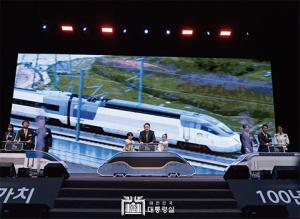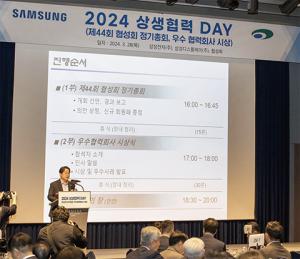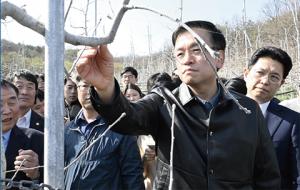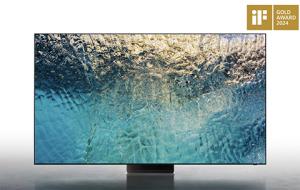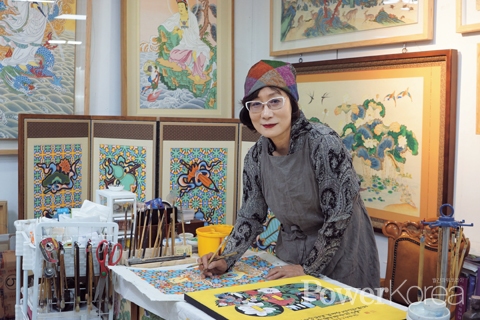 |
||
| ▲ Park Moon-sook, Director of Woonhyang Woori Folk and Buddhist Painting Lab | ||
From a Korean language teacher to an artist
Artist Park had brewed her dream to be an artist since she was a child. She showed a great talent in drawing and decided to deepen her skill at an art college. Her parents, on the contrary, were doubtful about her dream as they believed that most artists suffer from financial hardships. They encouraged her to be a Korean language teacher instead which she duly followed. Although she had worked as a teacher for many years, she found inside of her the unquenchable dream always shouting for fulfillment. “I couldn’t just carry it on any more and decided to do something at least. I started by taking a course at an art academy using my spare time and I built the basics skills there. Then I furthered my study at a graduate school of art on which I widened my skills at drawing, watercolor, Korean painting and calligraphy extensively” says Park. It was folk, and Buddhist, paintings, however, that enlightened her.
Development of style
“Folk paintings and Buddhist paintings require us to read its meaning over visual sensations” explains Park. If ‘flowers and birds’ and ‘grass and insects’ are the two most representative works of Park in terms of passing down the tradition, ‘100 children folding screen’ represents her creative style in contemporary terms. “Whether it was the former or the latter, however, creating a work that makes the viewer feel calm and benevolent is my foremost purpose.” In the meantime, Park established her style of Buddhist painting at Tongdo Temple, one of the leading temples when it comes to Buddhist paintings. “Both genres prioritize the lines with folk painting thinner while Buddhist longer in comparison. So, perfecting every line according to one’s intention is very important to create a work to the level of satisfactory.”
 |
||
Embracing the beauty of dancheong
Dancheong, traditional multicolored paintwork on wooden buildings, is a traditional Korean art closely related to folk paintings and Buddhist paintings. It seems natural for Park to include this art in the boundary of her works. “Dancheong for me is like ‘dana’ or ‘generosity practice’. I do the work without expecting any material return as it gives me back the spiritual return: calmness and self-worthiness.” Meanwhile, Park has been giving a great part of her energy in teaching these beautiful arts to normal people at her art studio. When asked about her future plan, Park said “I wish to write a number of books relating to folk paintings on educational purpose.” Currently, Park is busy preparing for her 6th solo exhibition as well as a group exhibition scheduled July this year.
안정희 기자 honesty5835@naver.com

